“Hello, my name is Dah-knee-zah!”
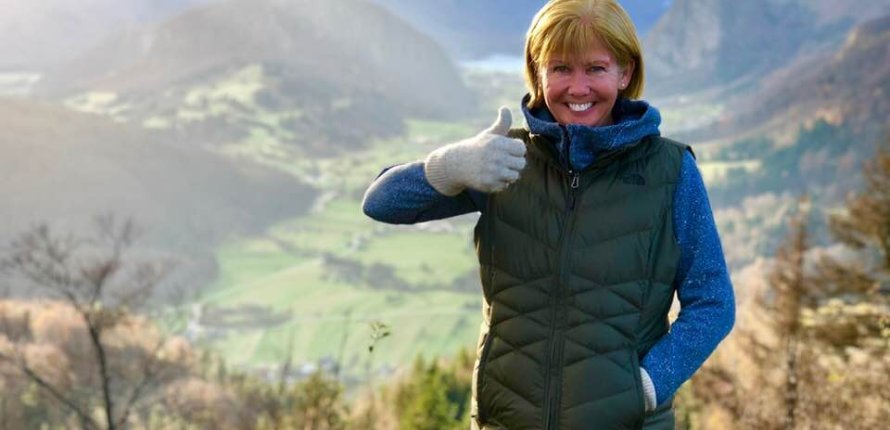
By Danica Hubbard, 2019 Fulbright U.S. Scholar to Croatia (Written January 2020).

Caption: Danica Hubbard at Fulbright Pre-Departure Orientation.
As soon as I introduce myself as Danica Hubbard, Croatians think I am Croatian. “Dah-knee-zah” in Croatian means “day,” or, as one of my colleagues proclaimed, “goddess of the sun.” Though my name is Slavic in origin, I am a mixture of Irish, German, Polish, and English ancestry. I wish my mother could see how the people of Croatia have welcomed me with a smile. A public-school teacher in Chicago for years before she lost her battle with cancer, she is my inspiration in applying for a Fulbright U.S. Scholar award.
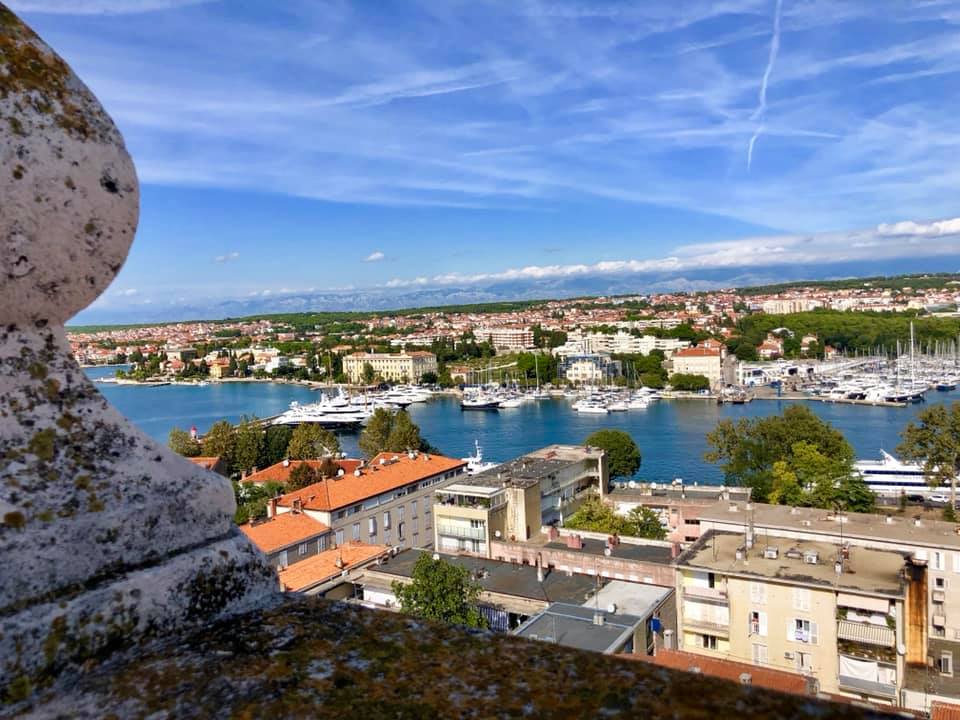
Caption: Overlooking Zadar, Croatia.
As a Visiting Scholar in English Education at University of Zadar, my teaching schedule is a rewarding grind: I start my days early and end late, but I am fully immersed in learning as much as I can about Croatian higher education. My first week involved multiple classes of observation, English activities, and a self-introduction, armed with little more than a YouTube video about my home institution, College of DuPage. The students introduced themselves as well. They told me they were concentrating on podiatry.
“You’re studying feet?” The entire class chuckled. Pedagogy.
My students were studying to become tour guides, interpreters, and teachers. The best part of this Fulbright experience is interacting with students, who have become more conversational as the weeks progressed. One of my colleagues commented, “Well, they’re used to you now, so they are more free.”
Introducing different teaching methods and alternative ways of knowing can be both rewarding and terrifying. To practice elements of the writing process, I transcribed 20 of my students’ homework introductions (randomly and anonymously) to share as a group activity in a peer critique session. Each group had four student introductions to read and provide constructive criticism based on a rubric we reviewed during class. One of my students unexpectedly protested. She complained that the assignment was a summary assignment and rating introductions was not possible, as it was “only a summary.” I was confused, so I attempted to clarify that a summary is written in your own words and contains only ideas from the original text, not your opinion. I went on to share that summarizing includes disseminating what is important and can be a tool for college success.
The student did not agree with my explanation and continued, “But you didn’t tell us we would be sharing it.” And I responded, “Your names are not on the introductions, but writing is meant to be shared with an audience.” A short summary does not require a full introduction; rather, it should be a condensed version of the entire document, presenting the salient aspects of the document and why it is relevant.
The student persisted, “But that’s not a real introduction. Only in our academic essays do we include real introductions.” I welcomed the dialogue, but was concerned as to why the student was so visibly upset--there were higher stakes unfolding here. Instead of developing mastery through repetition and fixed responses to specific situations and conditions, I was asking students to step out of the familiarized format and transfer the idea of writing an introduction differently in order to trace connections, recognize patterns, and present to an audience. I was stretching the boundaries to open assignments that involved a tangle of peer review, reader's response, and application.
Unfortunately, we ran out of time during that class, but I thought a lot about this student’s reaction and response. Until then, much of her writing had focused on constructing an essay that followed a strict format in which she developed an introduction, three body paragraphs, and a conclusion—a formulaic approach she was comfortable with. Although this writing approach may have helped her recognition of sections of an essay and her awareness of a thesis statement, it didn’t prepare her for writing an introduction in an executive report, full-length research article, or a cover letter. She was now facing what she had been taught and trained for during the past 12 years in the Croatian school system, which included emphasis on word count, memorization, and a prescribed format in a teacher-centered classroom. This curricular format collided with my expectations for students to dive into an open communicative collaboration before, during, and after their writing assignments. I asked students to experiment with the familiarity of different rhetorical devices, like metaphor and analogy, in order to create their own content, which often led to discussions about formal register or questions about tools for college success. The road map was not restrictive, but open to taking alternative routes while still meeting the goals of the course objectives. It was a surprising and enlightening clash between concrete classroom expectations and embracing the unexpected that we were navigating together in striving for academic success.
New ways of learning rock our collective boats of knowledge before we can try to accept learning different ways in context. I will always remember this student and her passion for what she has learned, what she is learning, and what she will learn in the future. She has taught me that introducing new teaching methods and alternative ways of knowing can be both rewarding and terrifying for students.
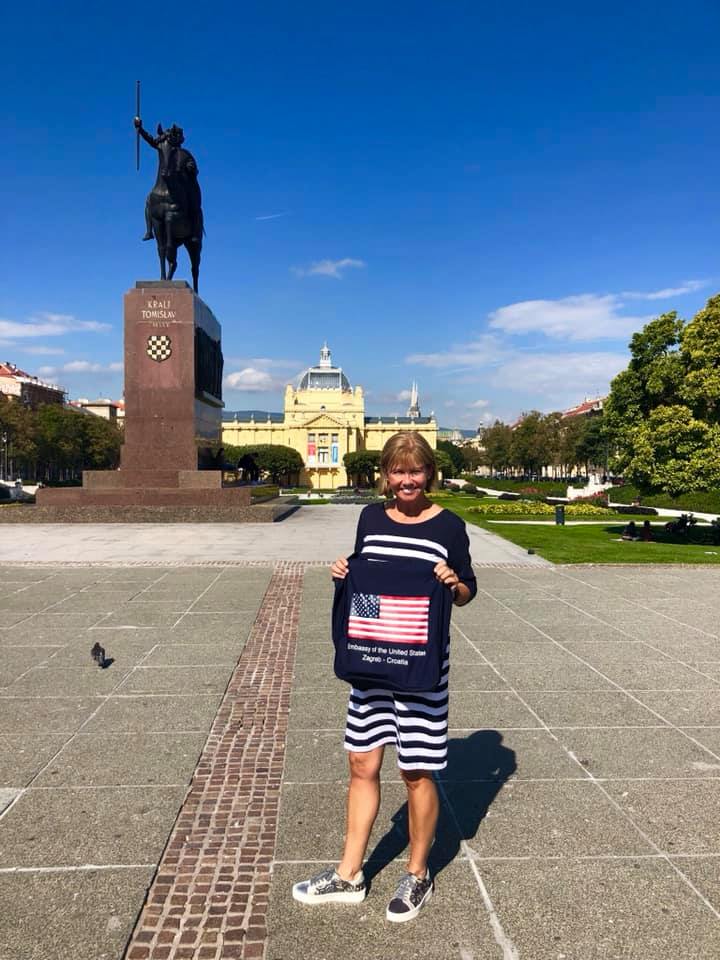
Caption: Danica Hubbard posing with a gift from the U.S. Embassy in Zagreb.
As the end of my semester at University of Zadar quickly approaches, I find myself reflecting on my teaching and learning in Croatia. It's hard to believe the months passed so quickly and my time on campus will soon be over. “That’s it,” is a common Croatian phrase, a “closer,” usually inserted abruptly when something comes to an end or someone wants to move things along. This experience has been enlightening, frustrating, exhilarating, lonely, and communal, a combination of emotions that has ebbed and flowed over the past five months. My husband always asks me, “Are you done yet?” but I have a passion to always be packing my bags and traveling to new places. I consider my mother in-law, the globe-trotting travel agent, Joan, as the OGG – “original go girl.” She elevated the travel industry and inspired me by impacting the travel sphere for women. She strongly believed that sharing people’s stories, nationalities, and culture promoted fewer conflicts and inequities in our world. By meeting people in new places, our eyes are opened to new ideas and ways of living. Travel is a choice we make to carve out an existence that empowers us to see the world from new perspectives.
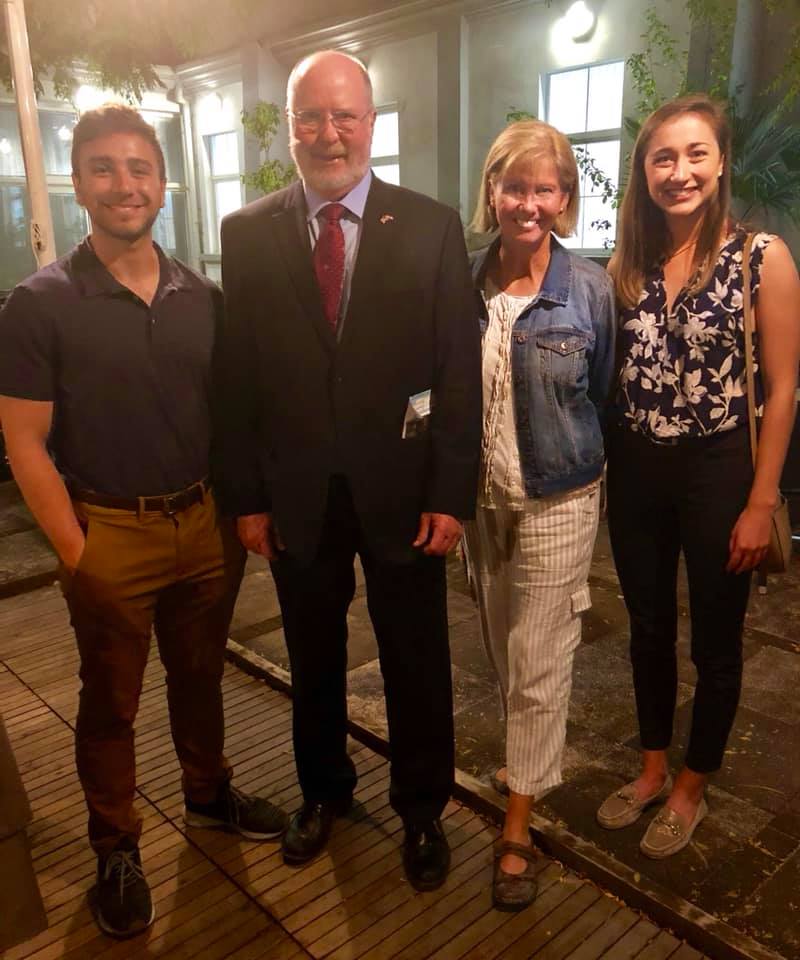
Caption: Danica Hubbard with Robert Kohorst, United States Ambassador to Croatia and two Fulbright U.S. Student English Teaching Assistants at The American Corner in Zadar.
Long distance is a difficult balance between feeling lonely and separated, but at the same time, empowered and curious. Admittedly, being away from my family and friends caused me to take a long hard look at why I like traveling so much. And one of the answers came from Nora Ephron, one of my favorite writers, who said, “Everything is copy," meaning that observing, recording, and sharing our experiences has tremendous value. I enjoy archiving my travels via images and words because travel informs teaching and learning. It enhances the process of building curriculum, brainstorming grant funding, and developing innovative ideas. Travel builds awareness, tolerance, and patience. Writing about travel produces copy for a larger audience to read, wonder, and perhaps plan their next trip.
I have learned a tremendous amount regarding the history of the Dalmatian region, and have learned that public diplomacy is about building bridges of understanding between people, cultivating meaningful connections, and debunking stereotypes. The core of the Fulbright Program is to help facilitate an ongoing dialogue of cultural learning, friendship, and understanding.
So here’s my advice to future applicants and Fulbrighters: go for it! Be open to changing your environment and shifting your mindset. Be bold enough to step outside your comfort zones. During this semester of teaching in Zadar, I made a personal and professional investment of a lifetime.
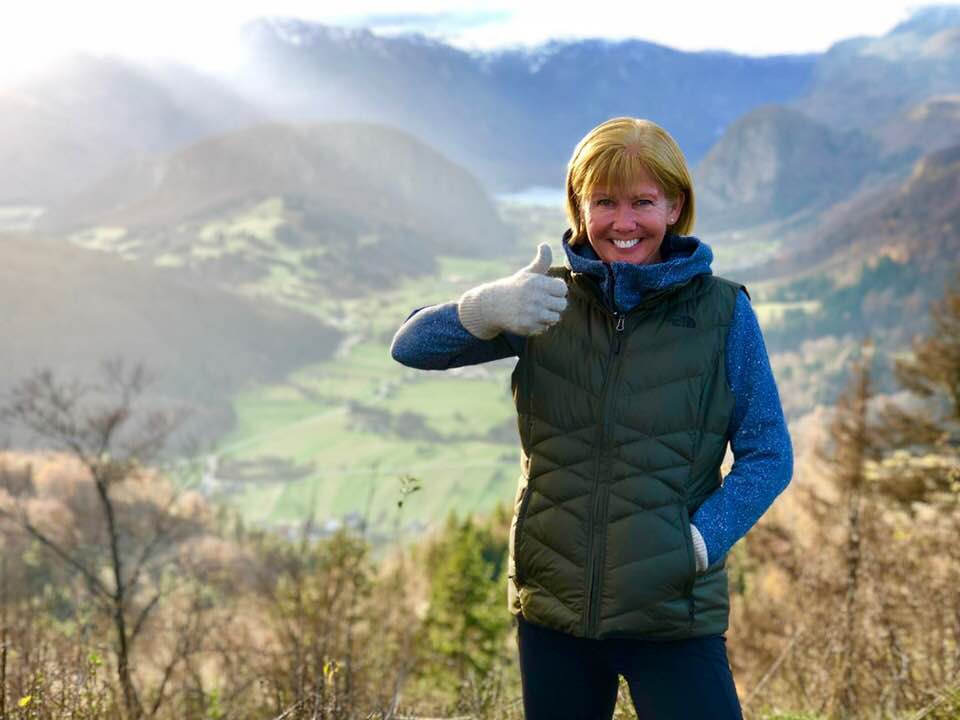
Caption: Danica Hubbard enjoying local hiking.
